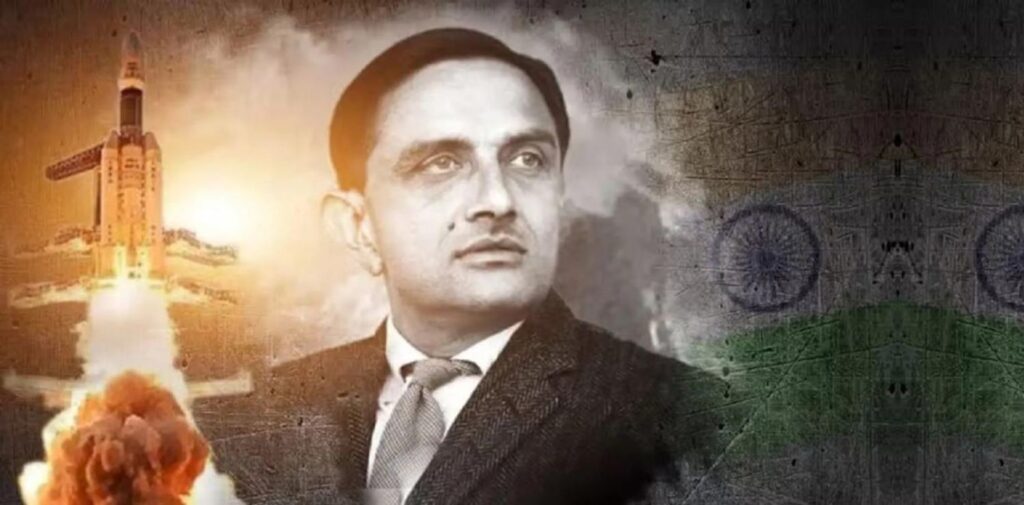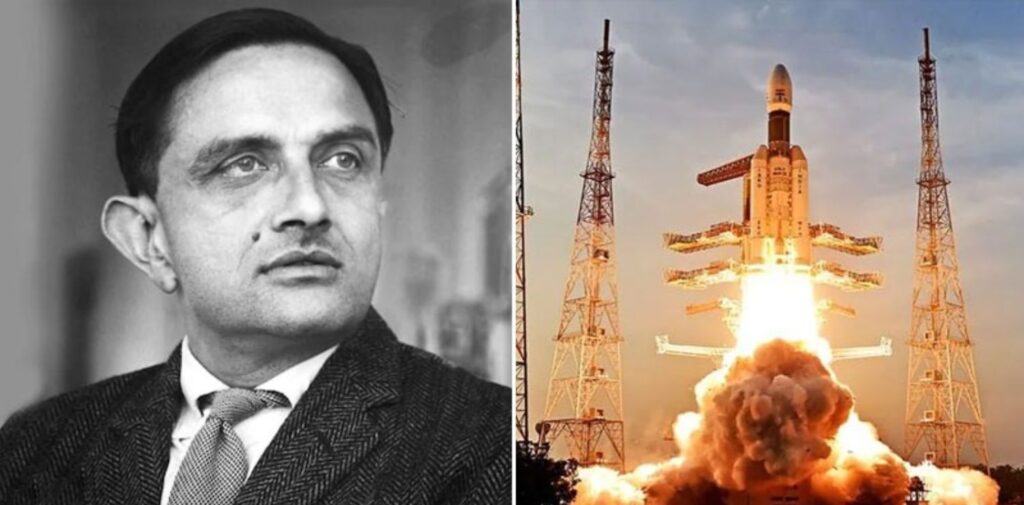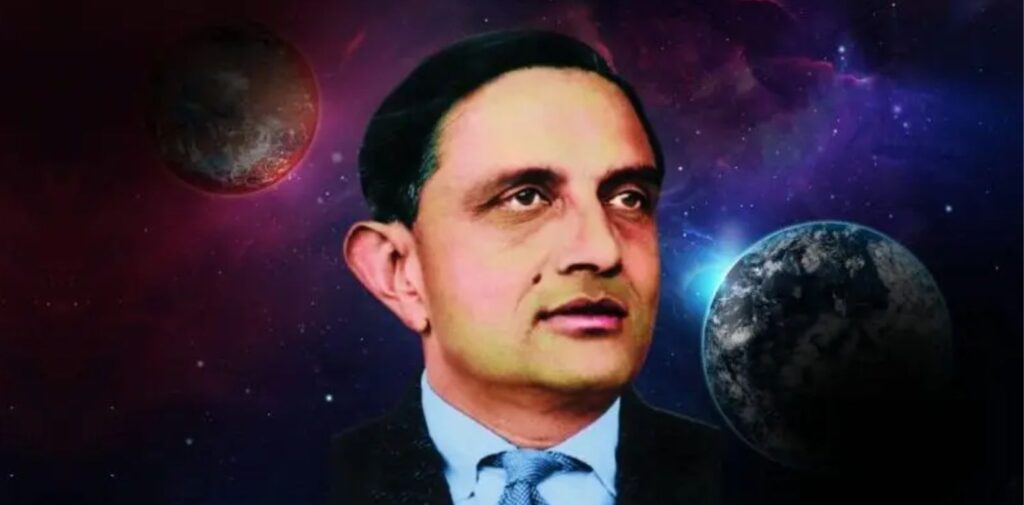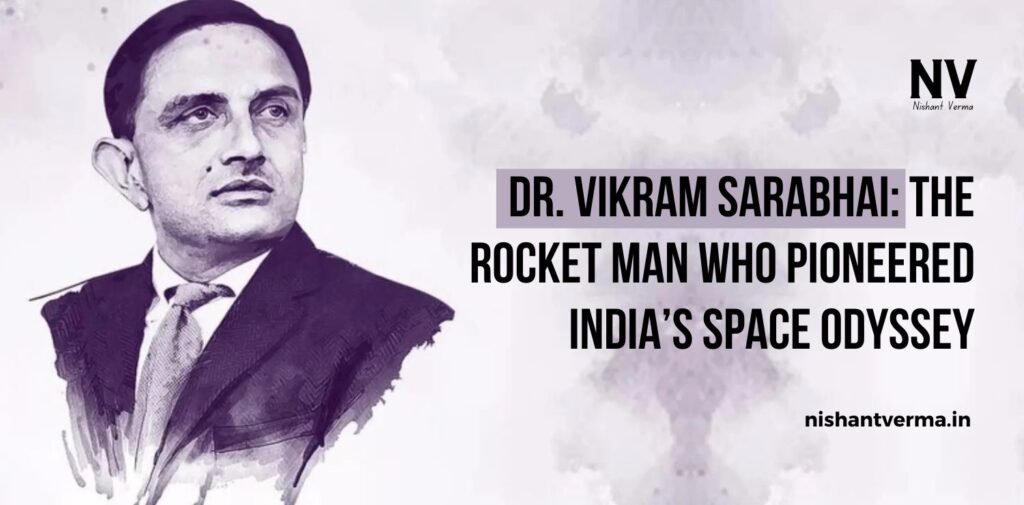Dr. Vikram Ambalal Sarabhai is widely regarded as the Father of the Indian Space Program. Known for his visionary leadership and relentless commitment to advancing science and technology in India, Sarabhai played a pivotal role in shaping India’s space program and laying the foundation for its future in space exploration. His contributions go far beyond just rockets and satellites; he was a multifaceted leader who understood the power of science to drive national development.
In this article, we will take an in-depth look at Dr. Vikram Sarabhai’s life, achievements, and lasting legacy, from his early education to his groundbreaking work in space research. This detailed exploration will provide a comprehensive understanding of how he became the “Rocket Boy” of India.
Early Life and Education: The Making of a Visionary
Dr. Vikram Sarabhai was born on August 12, 1919, in Ahmedabad, Gujarat, into a prominent family of industrialists. His father, Ambalal Sarabhai, was a well-known businessman, and his mother, Sarla Devi, was an influential figure in the family. From a young age, Sarabhai was encouraged to pursue his interests in science and academics.
Sarabhai’s journey in education began at St. Xavier’s College in Mumbai, where he earned a degree in physics. He was deeply interested in the sciences, particularly in the fields of applied physics and astronomy. After completing his undergraduate studies, Sarabhai went to Cambridge University in England to further his education. There, he earned his Ph.D. in Cosmic Rays in 1947, an area of research that piqued his interest during his early years. His work in this field was notable for its emphasis on experimental techniques to study cosmic rays, which provided valuable insights into the nature of space and the universe.
Sarabhai’s time in Cambridge exposed him to global scientific thought, and he was deeply influenced by the works of prominent scientists. Yet, even as he was developing his skills as a physicist, Sarabhai’s vision was already focused on India’s future in science and technology. His travels to the United States and Europe during this period further solidified his belief that India’s technological development must be led by its own indigenous research and institutions.

Vision for India: Science as a Tool for National Development
Upon returning to India, Dr. Sarabhai quickly became a leading advocate for the integration of science and technology into India’s economic and social development. He believed that science, especially space research, could be a powerful tool in addressing some of India’s most pressing challenges, including poverty, healthcare, and education.
Sarabhai was keenly aware that India, an emerging nation freshly independent from British rule, needed to harness the power of scientific research to build a modern, self-reliant economy. He championed the idea that scientific institutions should not only focus on basic research but also have practical applications that could benefit society at large.
To achieve this, Sarabhai focused on establishing world-class scientific research institutes in India. He was instrumental in the creation of the Indian National Committee for Space Research (INCOSPAR) in 1962, an organization that would lay the groundwork for India’s space exploration program. Sarabhai’s approach was to integrate space science with India’s developmental needs, emphasizing that space technology should serve the country’s agricultural, industrial, and social needs.
His pioneering work in space research was built on the belief that space could play a key role in solving problems such as communication, weather forecasting, and resource management in India. This vision would later serve as the foundation for India’s space agency, the Indian Space Research Organisation (ISRO), which Dr. Sarabhai would go on to establish in 1969.
The Birth of India’s Space Program: A Dream Realized
Dr. Sarabhai’s major contribution to India’s technological future came in the form of the Indian space program. His efforts to launch India into the space age began with the establishment of INCOSPAR in 1962, which was tasked with building India’s first space research infrastructure. Sarabhai understood the importance of starting small and building incrementally, which is why he advocated for a modest approach in the early stages of the program.
One of the first milestones in India’s space journey was the establishment of a rocket launch station at Sriharikota, a coastal town in Tamil Nadu, where India would launch its first satellites and rockets. The station was eventually named the Satish Dhawan Space Centre in honor of Sarabhai’s successor.
Sarabhai’s vision was to use space technology for practical purposes. He believed that space technology could improve the lives of people living in rural and underserved areas. In his view, satellites could be used for remote sensing of crops and weather patterns, telecommunications for education and healthcare, and navigation to aid in transportation.
In 1963, Dr. Sarabhai successfully launched India’s first satellite, Aryabhata, through the Soviet Union’s assistance. The satellite’s launch marked a major milestone for India and was symbolic of Dr. Sarabhai’s ability to turn his dreams into reality. Aryabhata’s successful deployment paved the way for future space missions and laid the foundation for ISRO’s later successes.

The Founding of ISRO: A Legacy in the Sky
While Dr. Sarabhai’s role in INCOSPAR was crucial, it was his creation of the Indian Space Research Organisation (ISRO) in 1969 that truly changed the course of India’s space journey. ISRO was envisioned as a more ambitious organization that would drive India’s space program forward, focusing on both satellite technology and rocket science. Under Sarabhai’s leadership, ISRO aimed to develop indigenous satellite communication systems and build launch vehicles capable of placing satellites into orbit.
Sarabhai’s work with SLV (Satellite Launch Vehicle) was a key area of focus. He was determined to develop a launch vehicle that could place satellites in orbit without relying on foreign countries. This resulted in the successful development of India’s first SLV rocket, which in 1980 launched the Rohini Satellite into orbit—an achievement that was a testament to Sarabhai’s vision and leadership.
Sarabhai’s belief that space science could be used for development purposes remained at the core of ISRO’s mission. In fact, Sarabhai was instrumental in India’s first satellite communication project, INSAT (Indian National Satellite System), which was designed to improve telecommunications, broadcasting, and weather forecasting. The IRS (Indian Remote Sensing) satellites, which followed, provided crucial data for agricultural monitoring and disaster management.
Dr. Sarabhai’s leadership transformed ISRO into one of the world’s leading space agencies, proving that India could not only participate in the space race but also use space technology for the betterment of its people.
A Scientific and Humanitarian Vision
Beyond his achievements in space research, Dr. Vikram Sarabhai was known for his humanitarian approach to science. He was a passionate advocate for education and scientific research, and his contributions extended to fields like healthcare, education, and industrial development.
Sarabhai played a key role in the establishment of Indian Institutes of Management (IIMs), particularly the IIM Ahmedabad, which is today one of the top business schools in the world. He also helped set up Prasanti Kunj, an institute for research on tropical diseases.
Sarabhai was also instrumental in the creation of the Indian National Science Academy and the Physical Research Laboratory (PRL) in Ahmedabad, which continues to be a leading research institution in space and atmospheric sciences.
The Untimely Death of a Visionary
Dr. Vikram Sarabhai’s life was tragically cut short on December 30, 1971, when he passed away suddenly at the age of 52. His untimely death left a void in India’s space and scientific community, but his legacy continued through the institutions and programs he had established.
In recognition of his immense contributions to India’s space program, the Indian government posthumously awarded him the Padma Bhushan, India’s third-highest civilian award, in 1972. His work and leadership in space science continue to inspire generations of scientists and engineers.

The Legacy of Dr. Vikram Sarabhai
Dr. Vikram Sarabhai’s legacy is felt every time a satellite is launched by ISRO, every time a rocket takes off from Sriharikota, and every time India makes a new leap in space exploration. Today, ISRO is one of the leading space agencies in the world, responsible for launching a series of successful missions like the Chandrayaan missions to the Moon and the Mangalyaan mission to Mars.
Sarabhai’s work in space, education, and national development laid the foundation for India’s global leadership in space science. His belief that science should serve humanity continues to be a guiding principle in India’s scientific endeavors.
In conclusion, Dr. Vikram Sarabhai’s vision, leadership, and unwavering dedication to science and technology have left an indelible mark on India’s future. As the “Rocket Boy of India,” his contributions continue to propel India into new frontiers of space exploation, ensuring that his legacy will live on for generations to come.
Dr. Vikram Sarabhai’s life is a testament to the power of vision and determination in shaping the future. His unwavering belief that space technology could be harnessed for the nation’s development continues to drive India’s space achievements to this day. The “Rocket Boy of India” may no longer be with us, but his legacy is firmly etched in the skies.




